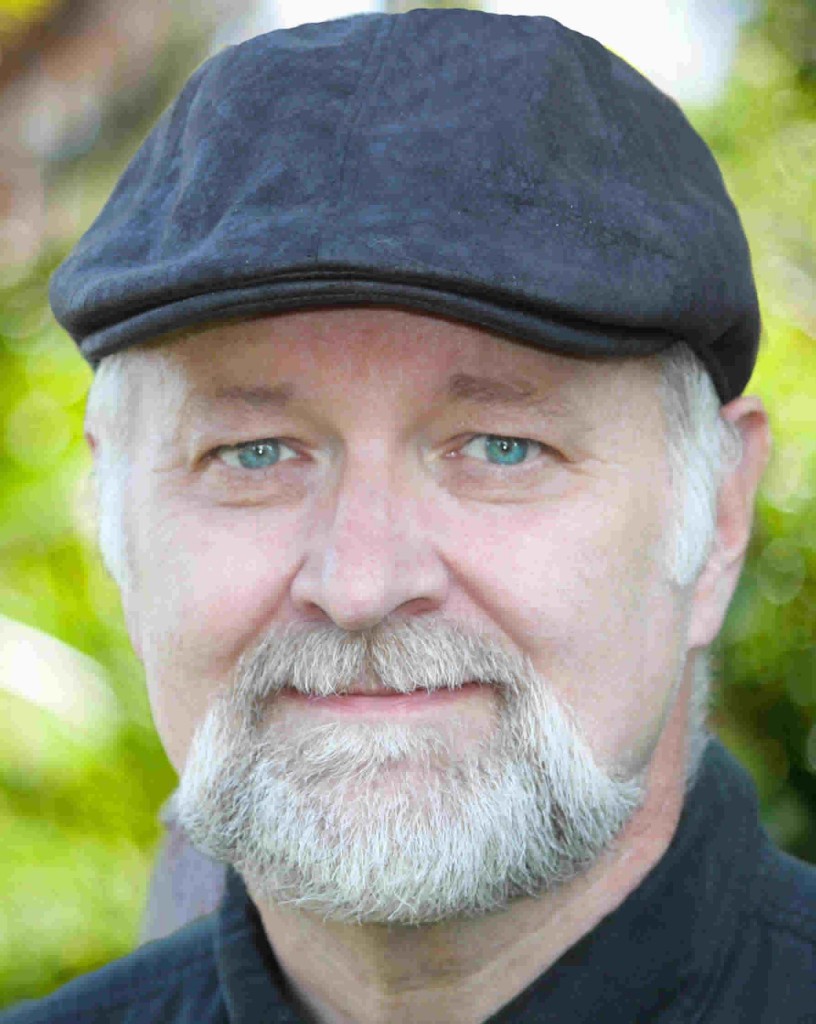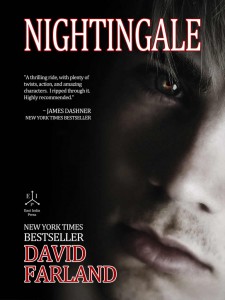Reading in the Future, Guest Blog by New York Times Best Seller, David Farland
Friends I am taking a short but necessary hiatus (all work I promise) to finish two works in progress, Bone Stalker and Celeste, Eyes of the Demon. I’m in a bit of deadline crunch and need to focus. But…The Dark Side of Carthage Falls will continue! I promise!!! The series will pick back up where we left off Jan 1st (Now I know that for some of you this is not a good day, but think about this…when you come out of that New Years Eve induced coma a fun story will be waiting for you!). This week and next, and the week of New Years Eve, I will posting guest blogs and re-posting earlier chapters of The Dark Side…for my newcomer friends. My sincerest apologies and gratitude for your friendship! MERRY CHRISTMAS and HAPPY NEW YEAR!
IN THE MEANTIME–ENJOY this excellent guest blog from my friend DAVID FARLAND. He is a man of remarkable insight, and author of most excellent fiction and fantasy. His latest work Nightingale is now available. I’m sure that many of you have read his works…so enjoy his article! Thanks David!
Reading in the Future
Imagine that you put on your “reading glasses.” The glasses are dark, fitted with lasers and high-quality stereo earbuds, so that as you put them on, your entire field of vision is captured. A laser inside the glasses flashes a novel title on the interior surface of your eye.
Of course, the book you see is my book (why not, it’s my fantasy). The letters start small, off in the distance and they quickly draw closer to you, but they don’t stop, they wash right over you and just when it seems they’re all around you, they explode in a burst of light, “Nightingale, by David Farland.” You can hardly imagine what life was like before 3D. As soon as you read the last word, a laser with a computer link that tracks your eye movement cues the background music, and images begin to flash in your eye—a holographic video-clip of the character of Bron, as an infant, being abandoned outside the door of a cheap hotel in the Utah desert. The camera pans up to the face of his mother, Sommer, bitter and broken, with tears in her eyes. We flash to the prologue, where Sommer runs through a forest at night, her breathing deep, while dogs snarl and bark as they give pursuit. Fireflies rise up around her.
Words to the novel appear on screen, as background music continues, and you begin to read. As Sommer twists her foot and falls, the lasers pace your reading and insert a sound-effect—the thud of a body falling, the hiss of breath knocked from Sommer’s throat. The dogs bay more excitedly. A man’s heavy footsteps can be heard tromping through the brush behind the reader, and a startled mewling cry escapes Sommer’s throat. . . .
Welcome to the future of reading, where text, images, sounds and music forge a collage. That’s the vision I have that led me to become a co-founder of East India Press.
The technology to do this already exists. The use of heads-up displays in fighter jets was pioneered in the 1960s, and that technology has now gone public. Though readers now are using the iPad2 and the Kindle Fire, I’m looking forward to the devices we’ll have five years from now, or ten years.
How can reading technology be better than with current books?
We don’t want to replace reading. We don’t want to make movies. Reading often engages the audience’s imagination in ways that movies fail to. We want to keep it that way. We want the reader to be a partner with us in bringing a tale to life. At the same time, we hope to ‘enhance,’ the story, help readers become more fully involved with it, yet keep budgets reasonable. With film clips, animations, illustrations, background music, and sound effects, we can create something that fuses a lot of storytelling tools.
Creating e-books has become cheap and easy. This year, it is estimated that three million people will be putting their own e-books up for sale. That’s a staggering number. If you spend twelve hours a day just examining those titles, and spend only ten seconds studying each e-book put up this year, you wouldn’t be able to glance at even 1/100th of all the books that will be published—much less read one!
Readers are being deluged, often with books that aren’t any good. Most of those books, unfortunately, wouldn’t have made it past an editor. The author just wasn’t ready. Sure, there will be a few diamonds among all of that coal, but no editor will have time to sort through it.
I’ve had my share of sorting through manuscripts. For nearly a decade I was the first judge for one of the world’s largest writing contests. A funny story, once an editor of a major publisher asked me to help pick a book to give the “big publicity push to” for the next year. I read through thirty books and selected a book that the marketers thought was “too-long” for its intended audience. I pointed out that the book was also written several grade levels too high for its intended audience. But it was a great book, so I urged them to push it despite the book’s apparent problems. It was called Harry Potter.
Even though authors can publish their own works, we’re going to need editors in the future who understand how to green-light a novel, who can recognize what will please an audience. But once a work is selected, the editor will take the role of a producer—assembling a creative team of composers, musicians, illustrators, animators, directors, sound-effects engineers, and so on.”
Distributing enhanced books won’t be expensive. After all, it will be done electronically. There are no copies to print, ship, or store. But creating them will be expensive and time-consuming.
Still, it will be a lot less expensive than making a movie. To create a really great movie with a lot of special effects can cost hundreds of millions of dollars, and it will only give the viewer an hour or two of entertainment. But by meshing technologies, we can create a similar experience with novels, spending perhaps only a hundred thousand or two—and it will give a reading experience that might last for twenty or thirty hours or more! Novels have a unique ability to let us achieve deep penetration into the minds and emotions of a character, much more so than with a film. I’m excited about the possibilities.
In fact, I am so excited about the possibilities that I went indie with this next novel. I didn’t have to by any means. I’m an award-winning New York Times bestseller. Instead, I decided to start my own publishing company for enhanced novels. I see potential. Nightingale is the first young adult novel I’ve written, outside of a little work with Star Wars and the Mummy. I knew it could be a hit, but I wanted to do something . . . unique with it. I’ve trained dozens of other #1 international bestsellers, people like Brandon Sanderson and Stephenie Meyer, and I’ve learned to spot “good,” whether it’s someone else’s work or my own. Nightingale has it.
Now that it’s done, this is a first step toward creating a more-engaging form of novel, the kind that kids who are reluctant readers might devour. I’m looking forward to see what we can do in ten or twenty years. But Nightingale is a step toward that future.
Nightingale is the story of a young man, abandoned at birth, rejected from foster home after foster home. People see that he’s brilliant and talented, but also “strange.” He’s the ultimate loner until he meets Olivia, a marvelously gifted teacher, who recognizes that Bron is something special, something that her people call a “Nightingale,” a creature not quite human.
I was excited to see how it would be received. I was even more excited when the first reviewer said, “I devoured the novel. It was absolutely incredible! . . . I struggled to explain just how much I enjoyed it in my review. . . . After reading Nightingale, I don’t think I will even be able to go back to reading regular e-books again. Like it says in my review, reading the enhanced Nightingale felt like an ‘experience.’ It didn’t feel quite like a book or a movie. It initiated all of my senses. . . . enhanced ebooks are actually a real deal.” That’s what we were hoping people would see in it. The future of books is beginning now.
Best of all, East India Press has created a new web simulation technology that mimics how the book appears on the iPad, so you can see and hear it for yourself for free at www.nightingalenovel.com.
So where does the future of publishing lie? What will it look like in five years? David Farland says, “I don’t think that paper books will be dead. There are people like me who love them too much, and collect them. But the world is about to open with a lot of bright new opportunities. More people will be reading on e-readers of one type or another. The standard cheap tablets will be sold to schools by droves, starting a revolution in the way that children read, while color e-readers that can read enhanced novels will be more popular. I suspect that we’ll have VR technology coming in at about that time, to create a richer experience. A book that comes out in English will be downloaded in Africa and Asia on the minute of its release, and will be read around the world with gusto by larger audiences than we’ve ever imagined. More importantly, I envision whole new ways to tell stories—some which I can’t even talk about publicly yet. In short, rich new forms of entertainment are about to emerge—at least one of which has never even been possible until now! The future of reading entertainment is so bright, we’ll all have to wear shades . . . or maybe VR goggles!”
READ: Nightingale, by David Farland
MORE about David Farland: http://www.davidfarland.com/




